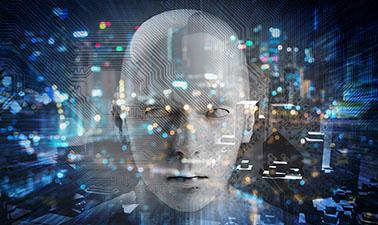Key Types of AI: Understanding Machine Learning, Deep Learning, and More
Feeling lost in the AI alphabet soup? ML, DL, NLP… it’s easy to feel like you’re drowning in acronyms. But here’s the secret: understanding the big picture isn’t about memorizing jargon. It’s about grasping a few core ideas. Let’s cut through the noise together and build a real-world map of the AI landscape. It’s less complicated than you think.
The Two Flavors of AI: A Specialist vs. a Polymath
First, let’s get one major distinction out of the way. AI is often split into two big categories based on its ambition.
Think of Narrow AI as a highly specialized tool—like a master chef’s best knife. It does one thing with superhuman precision. Your Spotify Discover Weekly playlist? That’s Narrow AI. The facial recognition that unlocks your phone? Narrow AI. The navigation app that reroutes you around a traffic jam? You guessed it. It’s brilliant, but it can’t do anything outside its specific programming. Almost every AI application you interact with today falls into this category. It’s the workhorse, not the wizard.
Now, this is the stuff of science fiction. For now. General AI is the theoretical concept of a machine with the intellectual capacity of a human—the ability to reason, plan, learn from experience, and handle a vast range of tasks. It’s the universal problem-solver, the digital polymath. But let’s bust a myth right here: despite the breathless headlines, we are nowhere near creating AGI. It remains a fascinating, distant star on the horizon, not a train arriving at the next station.
Machine Learning (ML): The Engine Room of Modern AI
Machine learning is where the magic really starts to happen. It’s a subfield of AI, but honestly, it’s the engine driving most of what we call AI today. Instead of being explicitly programmed with rules for every scenario, an ML system learns directly from data.
How It Really Works:
It’s like teaching a toddler to recognize a dog. You don’t list out rules like “has four legs, a tail, and fur.” You just show them lots of pictures of dogs. Eventually, their brain wires itself to identify a dog, even one it’s never seen before. ML algorithms do the same thing, just with data instead of picture books. A spam filter sees millions of emails labeled “spam” or “not spam” and learns the subtle patterns on its own.
The Main Learning Styles:
Supervised Learning: This is the “picture book” method. The data is neatly labeled. We show the model thousands of pictures of cats labeled “cat” and dogs labeled “dog.” It’s perfect for tasks with clear outcomes, like predicting house prices based on historical sales data. Unsupervised Learning: Now, imagine dumping a massive, unlabeled pile of photos in front of the AI and saying, “Find patterns.” The AI might start grouping them by color, shape, or texture. This is great for discovering hidden structures, like segmenting customers into different marketing groups without knowing what those groups are beforehand.
Reinforcement Learning: This is learning by doing—trial and error on a massive scale. Think of an AI learning to play chess. It makes a move (an “action”), and if that move leads to a better board position, it gets a “reward.” If it leads to a worse one, it gets a “penalty.” After millions of games, it becomes an unbeatable grandmaster. Actually, a better way to think about it is less like chess and more like training a puppy with treats.
Use Cases:
Use Cases:
This stuff is everywhere: fraud detection systems that spot weird transactions, the recommendation engine on Netflix, and even stock market prediction models.
Deep Learning (DL): The Specialist Detective Squad
If Machine Learning is the engine room, Deep Learning is the high-tech, specialized division. It’s a subset of machine learning that takes inspiration from the human brain, using structures called artificial neural networks.
How It Really Works:
Imagine you’re trying to identify a cat in a photo. A simple ML model might look for “pointy ears” and “whiskers.” A deep learning network, however, works in layers. The first layer might just identify basic edges and colors. The next layer takes that information and looks for combinations, like corners and contours. The layer after that might recognize shapes like eyes or a nose. Each layer builds on the last, passing its findings up the chain until the final layer confidently declares, “That’s a cat!” It’s like a detective squad where each member specializes in one type of clue, and together they solve the case.
Why It’s a Game-Changer (With a Catch):
DL is unbelievably powerful for understanding unstructured data—things like images, audio files, and raw text. It’s the powerhouse behind self-driving cars recognizing pedestrians and the magic in generative AI tools like Midjourney. But here’s the reality check: DL models are data-hungry monsters. They need colossal amounts of data and immense computing power to work their magic, which makes them expensive and not always the right tool for the job. And frankly, they can sometimes be a “black box,” meaning we know they work, but we don’t always know how they arrived at a specific conclusion.
Use Cases:
Self-driving cars navigating city streets, real-time language translation, and the entire universe of generative AI art and text.
Other Crucial AI Players on the Field
Beyond ML and DL, a few other specialties are crucial to the AI ecosystem. It’s less a linear progression and more an interconnected web where these fields increasingly borrow from one another.
Natural Language Processing (NLP)
This is all about teaching computers to understand and speak our language. It’s not just about recognizing words, but understanding context, sentiment, and intent. Think of the chatbot that actually solves your problem or the tool that summarizes a 20-page report into a single paragraph. That’s NLP at work.
Computer Vision
This gives machines the sense of sight. It’s the technology that allows a system to scan a medical image and spot anomalies a human eye might miss, or lets an agricultural drone identify diseased crops from the air.
Robotics
This is where AI gets a body. Robotics combines AI for decision-making (like navigation or object recognition) with physical engineering to perform tasks in the real world. We’re talking about everything from the Roomba bumping around your living room to the sophisticated robotic arms assembling cars in a factory.
So, Where Should a Beginner Even Start?
The common advice is to start with machine learning, and it’s good advice. It’s the foundation. But I’d go a step further. Don’t just read about it. Get your hands dirty.
My advice? Forget trying to master everything at once. Pick one simple project. Use a free tool like Python’s scikit-learn library (it’s way more accessible than you think!) and build a basic spam detector or a movie review sentiment analyzer. This small victory will teach you more than a hundred articles. From there, your curiosity and career goals can guide you toward the deeper, more specialized fields like DL or NLP.
Final Thoughts from the Author
We’ve unpacked the jargon, but the most important thing to remember is that these are all just tools. They are not sentient minds or magical black boxes; they are complex mathematical systems designed by people to solve human problems. The real skill of the future isn’t just knowing how to build them, but knowing which one to use, why to use it, and—most importantly—how to use it responsibly. The AI revolution isn’t just coming; we’re building it, one algorithm at a time. The question is, what will you build?
Which part of the AI puzzle are you most excited to solve? Drop your thoughts in the comments below!






Leave a Reply